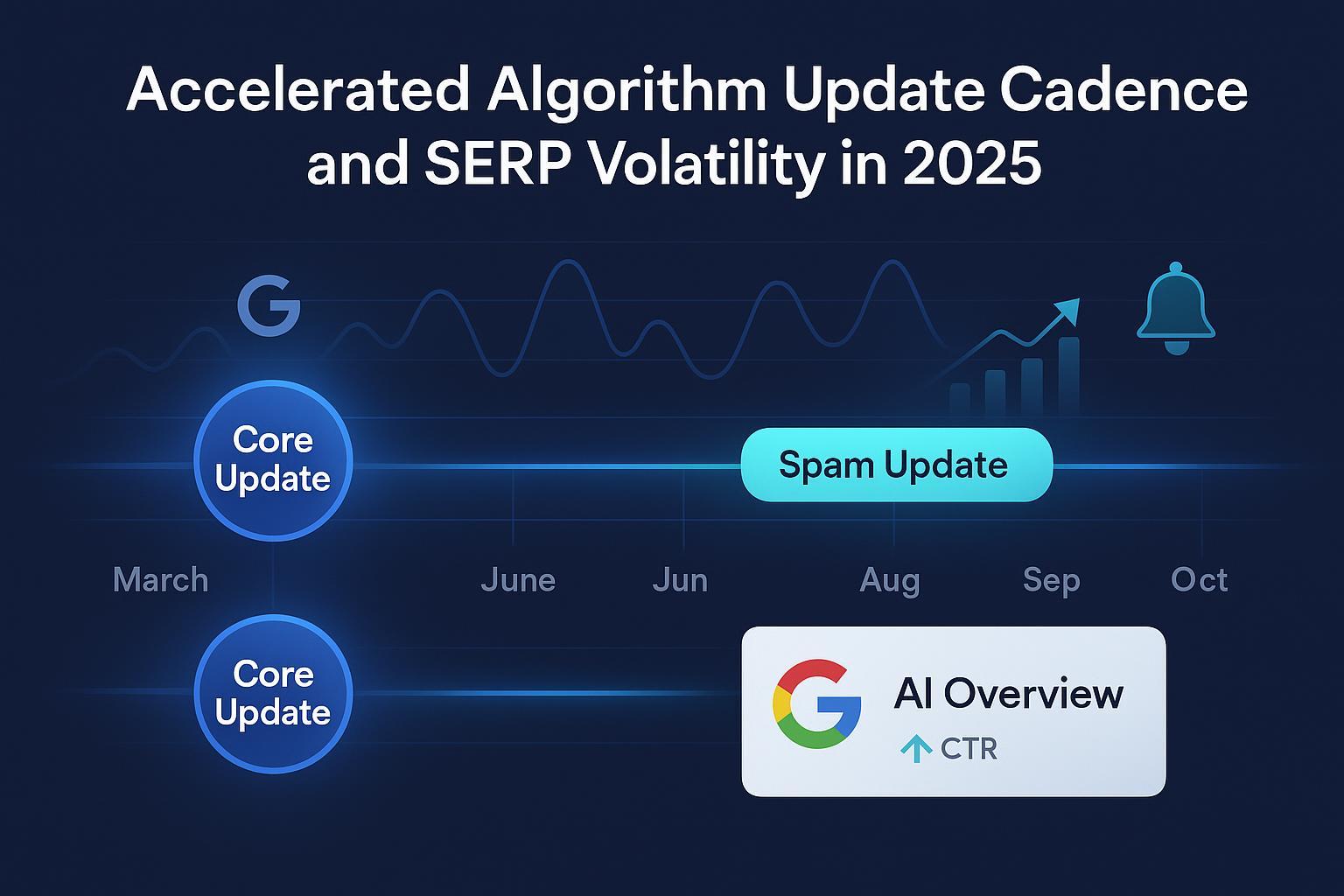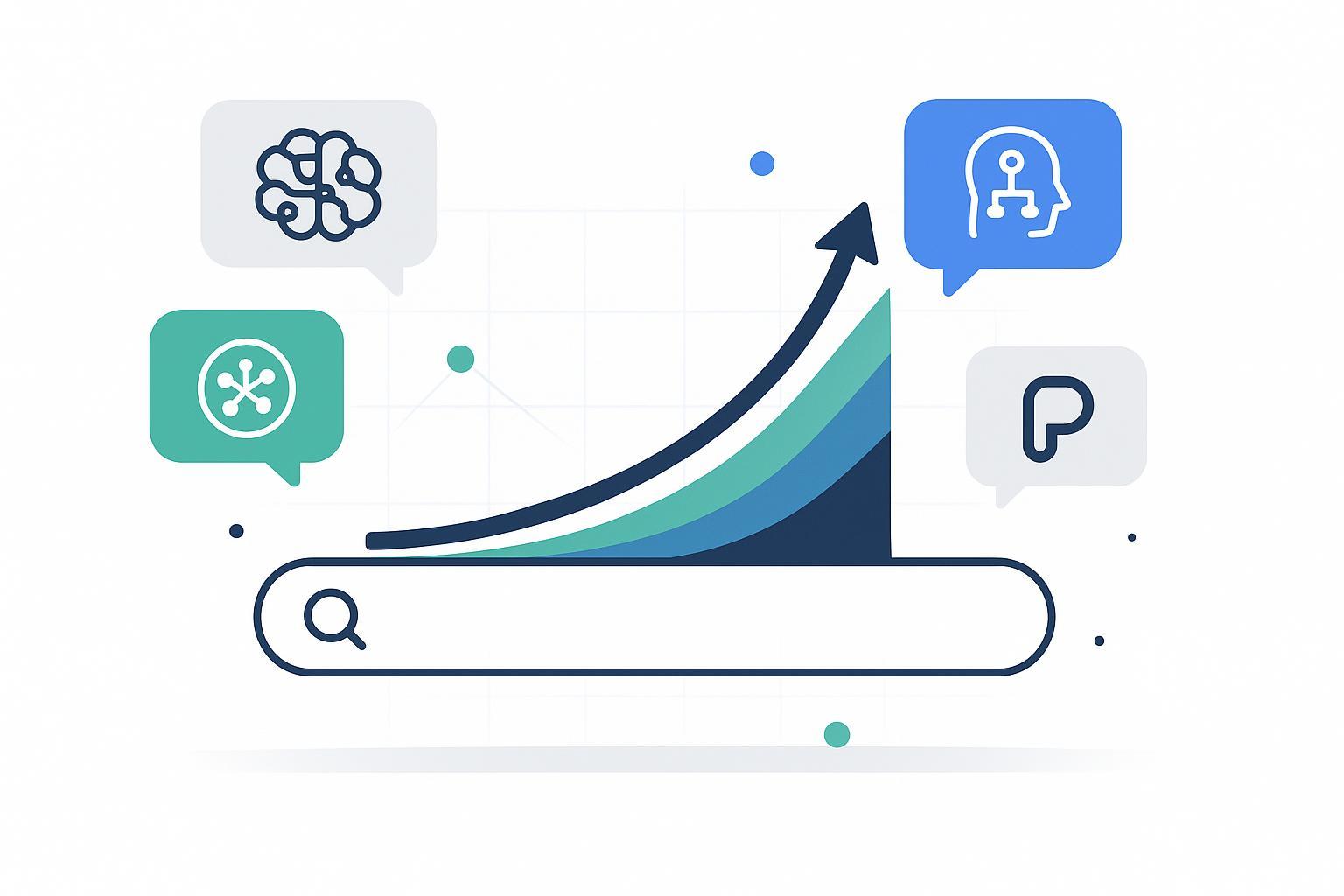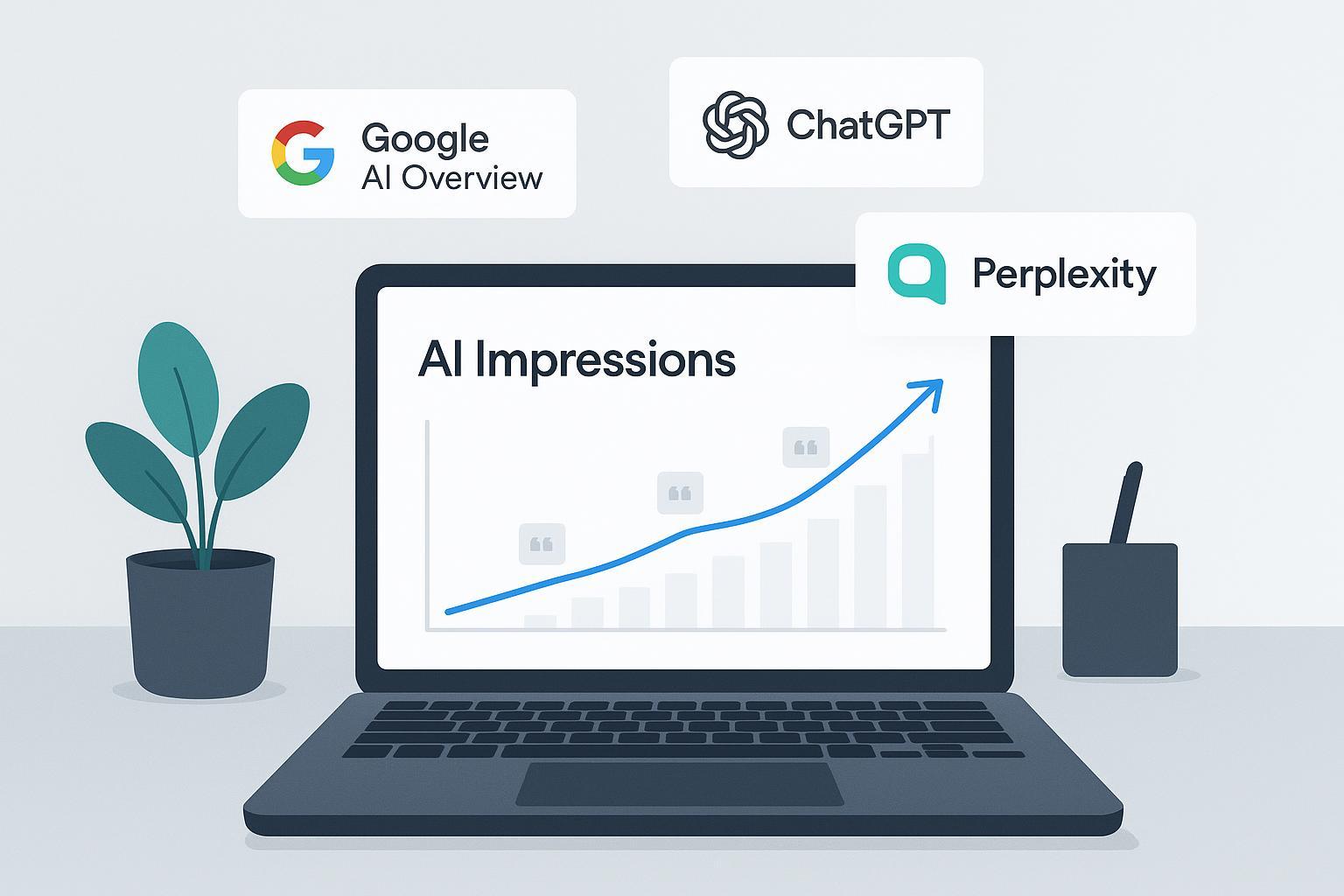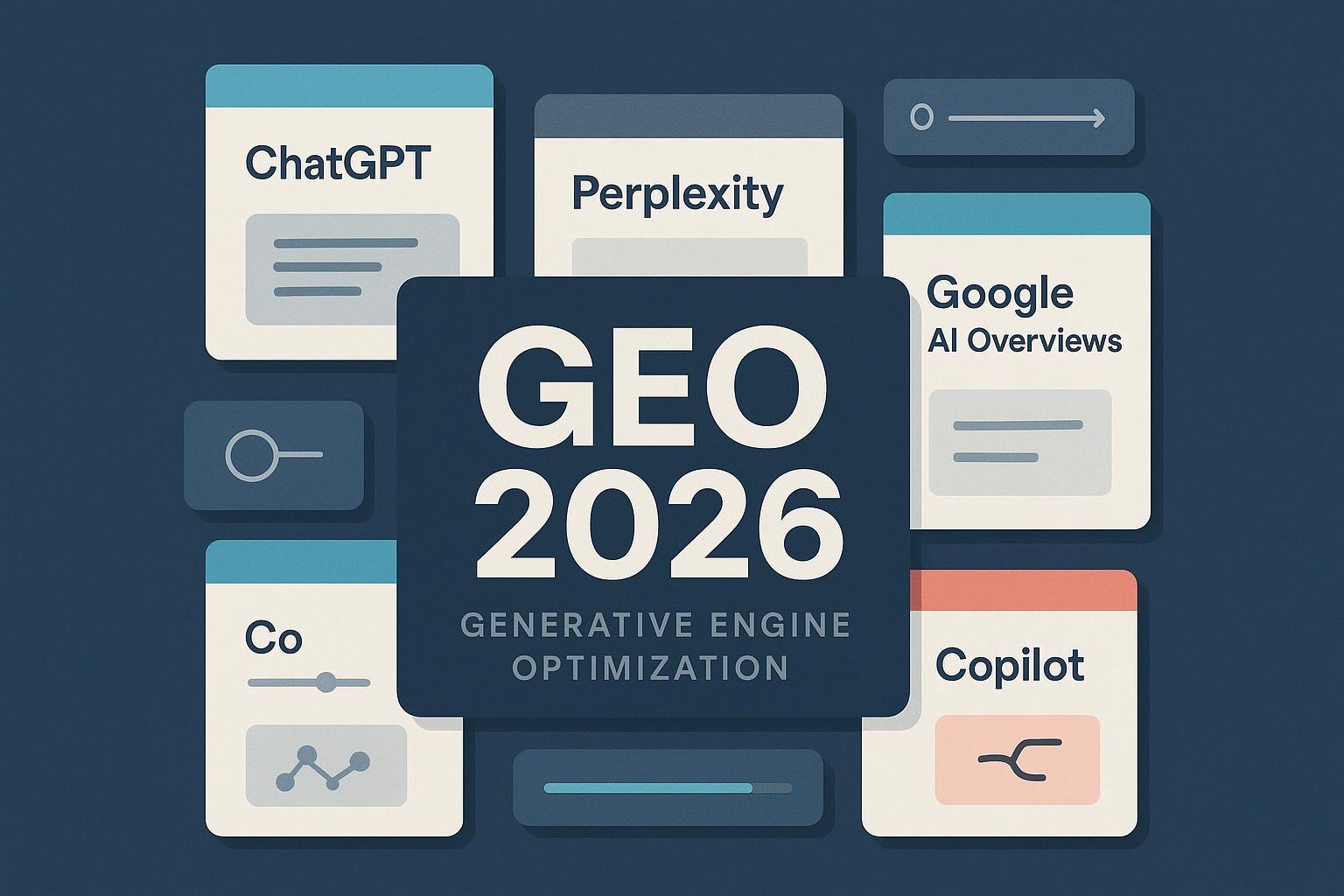Google Algorithm Updates 2025: Why Fast SEO Tracking Is Crucial Now
Two major Google updates and rising AI Overviews in 2025 shrink detection windows. See proven workflow and new tactics for agencies—act now.


As of October 2025, two confirmed Google core updates—March and June—and an extended August spam update have reshaped the search landscape and compressed the detection window for ranking losses. Google documented the March rollout and completion on its status dashboard in late March 2025, and likewise the June core update’s timeline through mid-July 2025; you can verify timing on the official incident pages for the March 2025 core update (Google Status) and the June 2025 core update (Google Status). In parallel, AI Overviews have continued expanding across informational queries, altering click behavior when they appear.
Why this matters: update cadence plus AI-driven SERP modules now produce more frequent traffic swings. For marketing leaders and in-house SEOs, the gap between “something changed” and “we know why and what to do” must shrink from monthly postmortems to near real-time observability.
What changed in 2025—and why it compresses detection windows
The June core update was unusually disruptive. According to Search Engine Land’s synthesis of provider data, Semrush found that more than 16% of URLs in the top 10 after the June update were new to the top 20 before the update, the largest reshuffle in four years of tracking and roughly 72% higher than March’s effect (SEL, July 22, 2025): “Data providers: Google June 2025 core update was a big update” (Search Engine Land). Practically, this means the rankings you depend on can change dramatically within days, and the turbulence often persists for weeks after an official “complete” status.
At the same time, AI Overviews (AO) are appearing on more queries and tend to reduce downstream clicks. Semrush reported AO triggered for 13.14% of U.S. desktop queries in March 2025, mostly informational, up from 6.49% in January: Semrush AI Overviews study (July 2025). In a July 22, 2025 short read, Pew noted that users who encountered an AI summary were less likely to click on links to other sites than users who did not see one: Pew Research Center short read (2025). Combined, AO exposure plus core update volatility shrinks the time-to-detection for ranking losses and cannibalization.
A 72-hour diagnostic workflow for volatility and AO impact
When you detect a drop, aim to establish causality within 72 hours. Here’s a practitioner-tested flow that bridges classic SEO and AI answer engines:
-
Confirm incidents and baseline timing
- Check Google’s status dashboard for recent updates and align your drop’s start date with the March or June core update windows or with August’s spam update period if relevant.
- Pinpoint whether declines started before or after an incident date; pre-incident drops often indicate site-level issues.
-
Segment the impact
- Slice by query class (informational vs. transactional), brand vs. non-brand, and device/geography. Volatility rarely hits uniformly.
- Separate pages with ranking losses from those with steady positions but falling CTR—these often correlate with AO appearances or new SERP features.
-
- For the affected queries, record whether AO appears, plus competing modules (featured snippets, PAAs, video packs). Track week-over-week changes.
-
Attribute and prioritize
- If rank drops cluster around update dates, treat as algorithmic impact; focus on content helpfulness, depth, and topical authority.
- If CTR drops without rank change correlate with AO exposure, prioritize answer-friendly content structures and citation pathways.
-
Initiate remediation
- Content: consolidate thin pages, expand depth and originality, clarify intent targeting.
- Technical: ensure crawlability/indexation, fix duplication and canonicalization, improve UX.
- Authority: improve sources, evidence, and expert signals on pages; cultivate credible citations.
-
Monitor recovery
- Expect partial improvements within 2–4 weeks for some pages; others may need the next core update cycle. Maintain weekly reviews even after turbulence subsides.
Practical portfolio example: unifying SERP and AO telemetry
For multi-brand teams, a unified dashboard reduces guesswork and shortens detection-to-action.
- Suppose a healthcare query portfolio shows a 12% week-over-week organic traffic dip while average rankings remain flat. Query-level reporting reveals AO appearing on several top queries.
- A unified view should display Google positions, AO presence, and references across answer engines, with historical comparisons.
Using Geneo to operationalize this, you can track cross-platform visibility, AO appearances, and brand mentions across AI answer engines alongside Google rankings, then drill into specific query reports like GDPR fines 2025 — largest cases to visualize how exposure shifts over time.
Disclosure: Geneo is our product.
From there, triage the affected queries: for those losing clicks when AO appears, re-evaluate content format (answers, evidence blocks, schema) and cultivate credible third-party citations that are more likely to be referenced by AI.
Measuring AO risk and CTR change (method plus caveats)
To quantify AO cannibalization without over-attributing:
- Identify AO-trigger keywords weekly: use a consistent sample and note device/geography.
- Compare CTR for AO-trigger weeks vs. non-AO weeks at the same average position. Avoid mixing branded and non-branded terms.
- Annotate notable events (e.g., June core update completion) to avoid conflating causes.
Evidence to ground expectations:
- Semrush’s March 2025 U.S. desktop analysis indicates AO prevalence for 13.14% of queries, heavily informational: Semrush AI Overviews study (July 2025).
- Pew’s July 22, 2025 review observed lower link-click propensity when AO is present: Pew Research Center short read (2025).
- Amsive’s April 2025 research across 700K keywords found notable CTR declines for AO-trigger keywords, especially non-branded and lower-ranking positions, with method details provided: Amsive AO CTR study (2025).
Methodological caveats: AO detection varies by account, geography, and cohort; CTR can be influenced by numerous SERP modules. Use consistent panels and avoid extrapolating aggregate findings directly to niche portfolios.
The operations stack: move from periodic audits to observability
In 2025, treat SEO like an observability problem:
-
- Daily anomaly detection for rank deltas, AO appearances, and CTR shifts; weekly human review for attribution and prioritization.
-
Incident response playbooks
- Document a 72-hour triage path from detection to remediation initiation, including stakeholder comms templates and change logs.
-
- Track Google SERPs and AI answer engines together. Use query-level histories to explain volatility with context. For brand citation cultivation, consider strategies like Reddit community best practices for AI search citations.
-
Reporting discipline
- Executive summaries that tie incidents to KPIs, with clear “next 2-week” remediation priorities. For ongoing insights, maintain a lightweight hub of analyses, such as the Geneo blog.
Why 2025 demands portfolio-grade tracking
- Frequency: two core updates in H1/H2 and a weeks-long spam update created overlapping volatility windows.
- Scale: the June reshuffle moved a large share of the top 10, making static rank snapshots misleading.
- Behavior: AO shifts click patterns, especially for informational queries.
- Accountability: leaders need to explain variance to stakeholders with evidence-based attribution.
In short, detection and attribution must be faster, and remediation must be prioritized against the biggest exposure drivers—algorithmic rebalancing and AO cannibalization.
Closing recommendations
- Implement daily anomaly detection and a 72-hour incident diagnostic workflow.
- Measure AO exposure and CTR impact at the query level; do not assume uniform effects.
- Strengthen helpful content and expert signals; consolidate thin pages and align with clear intent.
- Unify Google SERP tracking with AI answer engine visibility to avoid blind spots.
If you’re ready to shorten detection-to-action cycles across both classic SERPs and AI answers, consider trialing an AI+SEO visibility tracker like Geneo to centralize telemetry and reporting.
Sources and verification (selected, 2025)
- Google incident timing: March 2025 core update — Google Status; June 2025 core update — Google Status.
- June volatility scale: Search Engine Land data providers analysis (July 22, 2025).
- AO prevalence: Semrush AI Overviews study (July 2025).
- Click propensity: Pew Research Center short read (July 22, 2025).
- CTR declines: Amsive AO CTR study (April 16, 2025).
Change-log
- Updated on 2025-10-05: Added verified incident timing and June volatility analysis; incorporated 2025 AO prevalence and CTR studies; aligned workflow to 72-hour diagnostic window.





